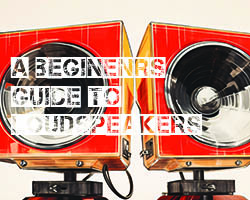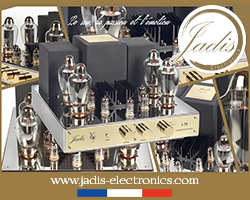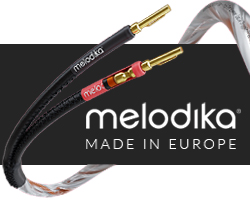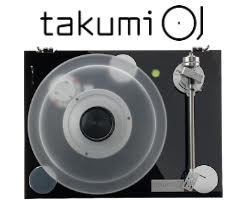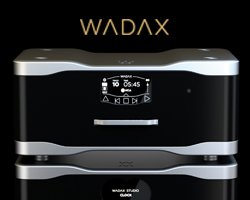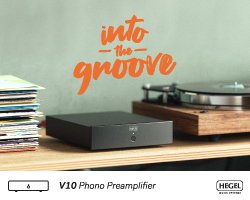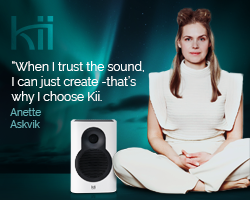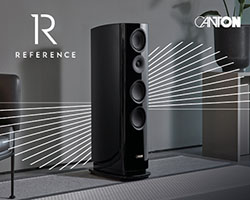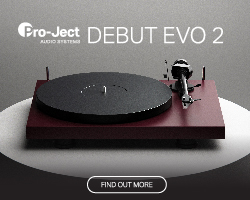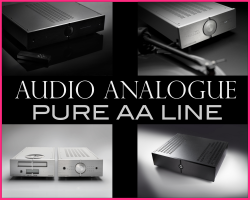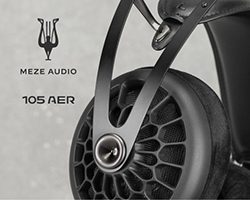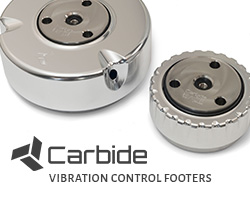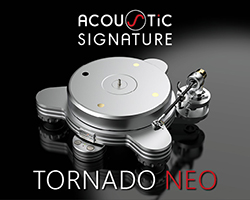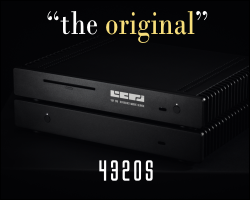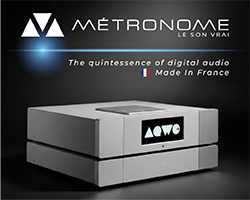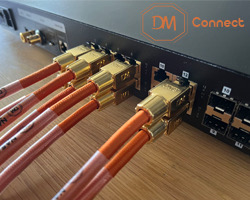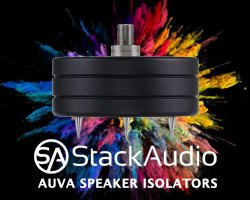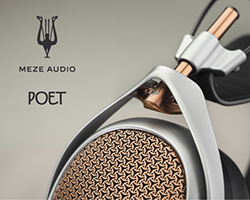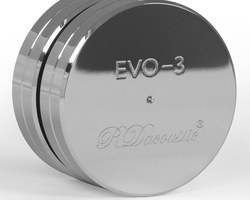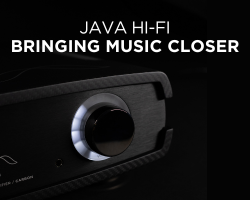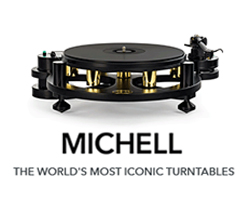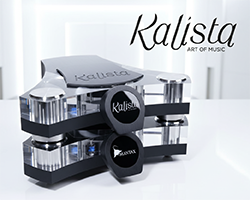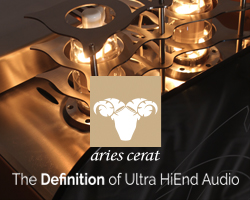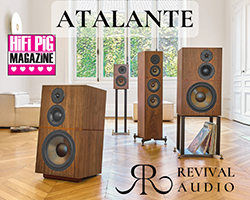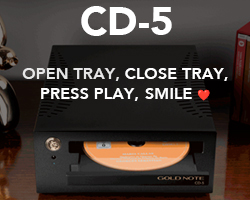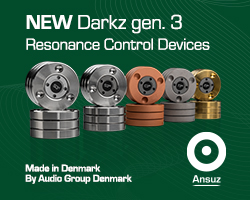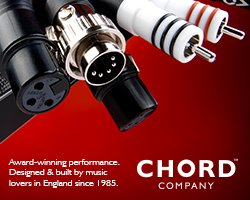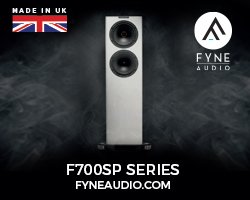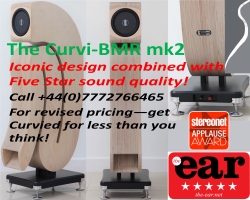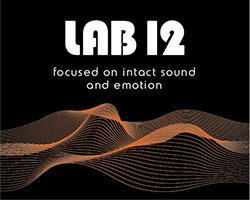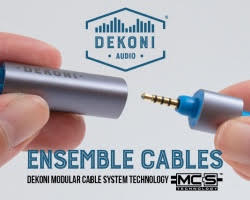PIEGA COAX 411 GEN2 LOUDSPEAKERS REVIEW
Piega COAX 411 Gen2 loudspeakers feature a dual-concentric, entirely ribbon-based tweeter/midrange driver setup, and continue the Swiss brand’s use of tensioned aluminium cabinets. Jon Lumb takes a look at this standmount loudspeaker costing £8000.

I’ve been aware of Piega for a while now, but this year’s North West Audio Show at Cranage was the first time I got to hear them with my own ears. As with any show, it’s a little bit difficult to evaluate the kit in such unfamiliar and often sub-optimal conditions. But there was enough there to intrigue me, not least the fact that such a relatively small speaker weighed in at 25Kg per side. A lot is going on that’s novel with this speaker, which we’ll break down in a bit, but in the meantime, a spot of background on Piega, not least because their presence in some of the larger English-speaking markets has been minimal, given their reputation.
The makings of Piega started in 1984, with the meeting of the two founders, businessman and amateur speaker builder Leo Greiner, and engineer and musician Kurt Scheuch. Kurt had already been playing around with electrostatic loudspeaker designs, and as well as the business side, Leo brought a strong sense of aesthetics and design to the partnership. The company has stayed resolutely in the family, and is now run by Leo’s two sons, Manuel and Alexander. The other thing that’s remained steadfast is their loyalty to Switzerland – they’ve never left their home town of Horgen on the shores of Lake Zurich, and the vast majority of the speaker manufacturing still happens there (the bass driver in these 411s is made by SEAS in Norway to Piega’s specification, all the rest of the speaker, including the incredible co-axial ribbon driver, and the extruded aluminium chassis are still made in house). Ribbon drivers have been a fundamental part of the Piega approach since those early days, and all their speakers involve some variant around the ribbon concept – the entry level ACE series uses and AMT driver, and at the other end of the spectrum, the Master Line series uses 4-8 ribbon drivers per side to form a small line array (this is great for helping reduce reflections off the floor and ceiling, and is the same principle used in all large PA systems, which is why you see these tall, thin stacks of speakers at concerts.)
Leo Greiner’s strong aesthetic sense has also translated to Piega, forming a long-standing partnership with Hannes Wettstein and his design studio. Although Hannes sadly passed away in 2008 at the age of 50, the relationship with the studio has continued under the leadership of Wettstein’s partner in the firm, Stefan Hürlmann. HiFi has come a long way from the styling of the earliest days, when a lot of the aesthetics were being decided by folks whose main skills were things like electrical engineering, and a great many products sported that “Fred in his shed” aesthetic. But Piega have really been quite pioneering in the way they’ve approached this, and there’s a particular elegance, along with a timeless quality, to the designs they put out. There are going to be a few environments where perhaps these loudspeakers clash with their environment, but for the most part I think they will fit in gloriously.
Piega has only had a presence in the UK for the last 10 years, which is frankly a travesty. Last year, distribution was taken over by Henley Audio, and I really hope they come to a considerably more prominent place in the UK market (subtle spoiler there).
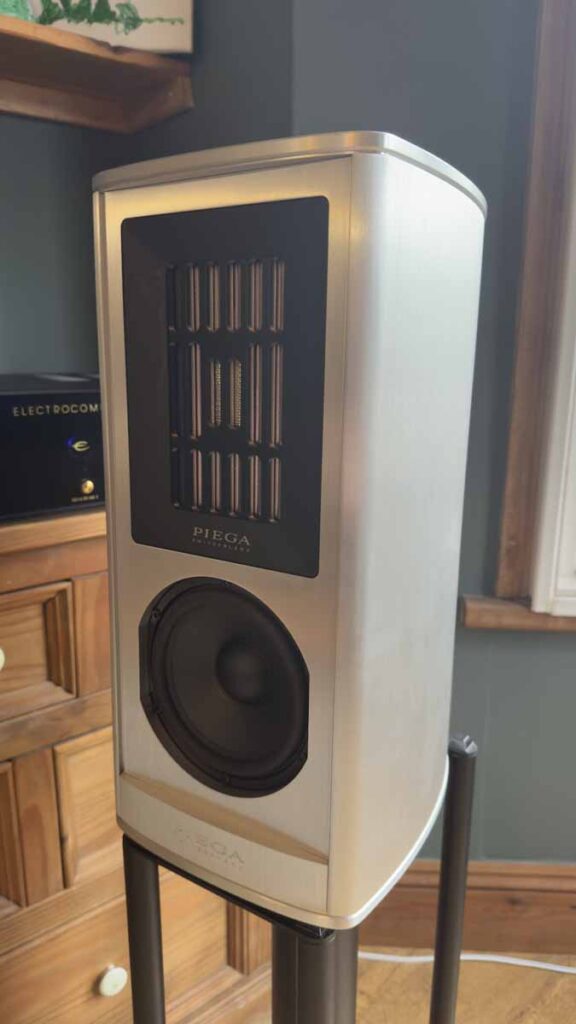
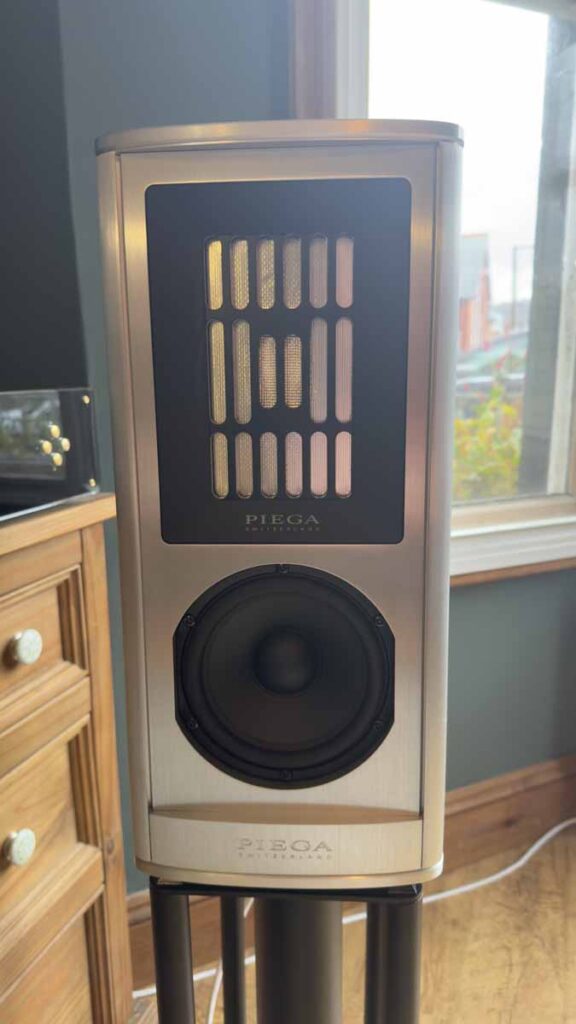
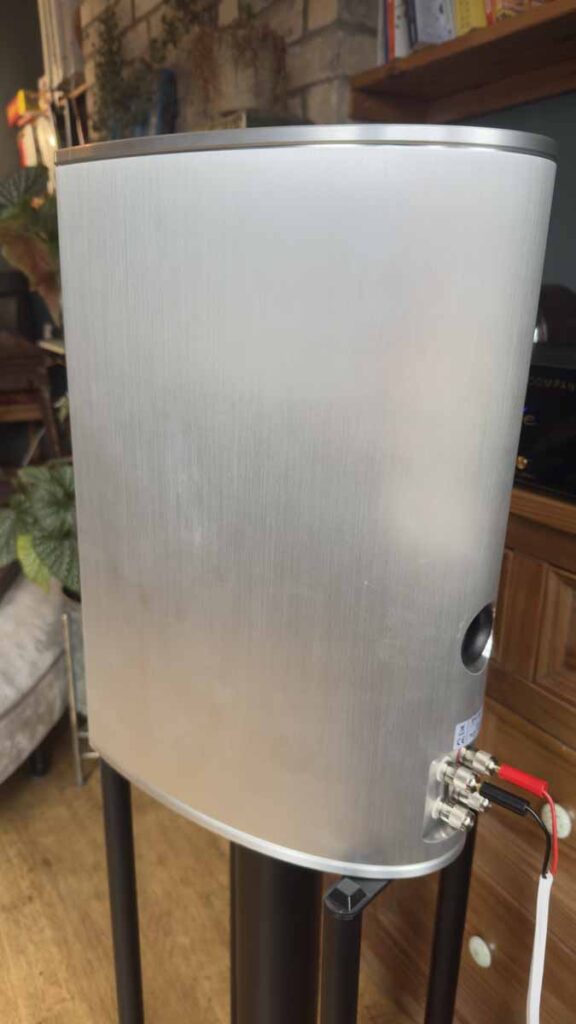

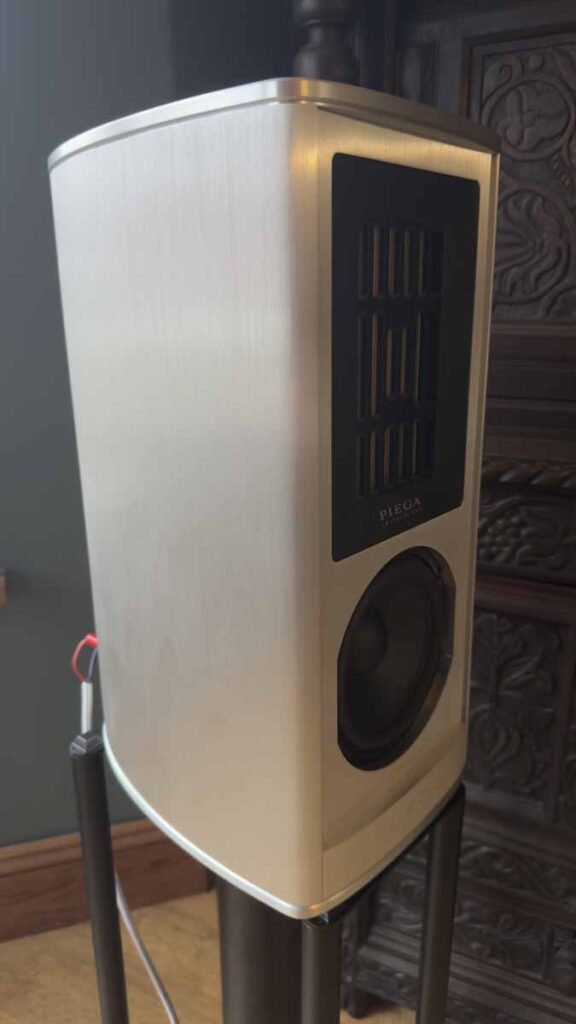

BUILD AND FEATURES OF THE PIEGA COAX 411 GEN2 LOUDSPEAKERS
The first obvious thing we’ll look at is the aluminium body. The COAX series is made from a curved, extruded aluminium body. If you approach loudspeaker construction from the more traditional approach of joining wooden panels together and adding some bracing, aluminium is a terrible material to make a loudspeaker from, because it rings like crazy. What Piega do is form the back and sides from one solid, curved piece of aluminium. Inside the walls are a series of metal plates that put the entirety of this main piece under tension, which turns it into a surprisingly inert cabinet. You only have to tap the side of the cabinet to discover just how dead it sounds. One other facet of this aluminium construction is that the walls of the speaker are comparatively thin compared to wooden cabinets. I did go to the trouble of taking the bottom plate off to see for myself, and the walls are something in the region of 4-5mm thick, at most. This means that the internal chamber of the speakers is disproportionately large for the size of the unit – something which I suspect contributes to some of the sonic performance Piega has managed to generate.
Next up is really what you’d consider the party piece of the COAX line, so much so that it’s named after it. The dual concentric driver that covers the treble and the midrange. I’ve had a surprisingly large number of dual concentric stand mount designs come through for review recently, with some appreciable different approaches to the various challenges that a dual-concentric design presents. A big issue in a more traditional setup is the fact that the larger driver acts as a waveguide for the treble, but one that is constantly moving backwards and forwards, thus changing the effect of the waveguide. The Piega design completely side-steps all of this, partly because the ribbons don’t really move a material amount relative to each other, and because everything is completely flat, there’s not really any kind of waveguide effect to have happen.
Something else, and this really tripped me up at the start because there are not the same visual cues as you’d normally expect, is that this is a 3-way loudspeaker, which is also unusual in a relatively compact stand mount unit. I don’t know what the crossover point is between the tweeter and the midrange section of the ribbon, but it’s probably something of a moot point. What’s far more interesting is that the coaxial ribbon covers everything from 50,000Hz (apparently – not something I can really run a blind test on!) right down to 450Hz. That means that the traditional driver – a custom-specced unit that Piega has manufactured by SEAS up in Norway, is a dedicated bass driver. This means the 411s will go down to 35Hz (±3dB), which is bonkers low for a unit like this. I did a quick comparison with a few similarly priced units: the Kef Ref 1 Meta – 45Hz, the B&W 805 D4 – 42Hz, and the Focal Sopra No1 – 45Hz. It really is in a league of its own on that front.
As at least a slight acquiescence to the laws of physics, which Piega seem to have otherwise stuck the middle finger up at, the 411 does have a (small) bass port round the back. As soon as you get to the floor standers in the COAX series, they switch to a sealed box design, but that becomes a lot easier when you can chuck in a fair few extra drivers to help with the bass reinforcement. At some point I’d love to hear what they can achieve with that extra capacity, but that’s a subject for another day.
One other aspect where the Piega offering is a little different is in the available finishes. Piega have leant into the aluminium chassis, and instead of an array of woods or carbon fibre finishes, they offer a stunning array of anodised finishes, where the dye is essentially bonded into the outer layer of aluminium oxide. What I particularly like about the anodised finishes is that you still see the character of the brushed aluminium – this effect is not like a paint-based finish where the paint completely blocks any sense of the underlying material. The range of colours is also rather lovely, including some particularly vibrant options in the Burgundy Red and Blue Lagoon – I love to see some options that present that addition flash of flare and personality. It’s not a cheap option at £1400, but having spent a year in my late teens working in a metal treatment works for the aeroplane manufacturing industry, I’ve seen first hand how involved the processes are for metal treatments, so this cost feels pretty commensurate with the work involved.
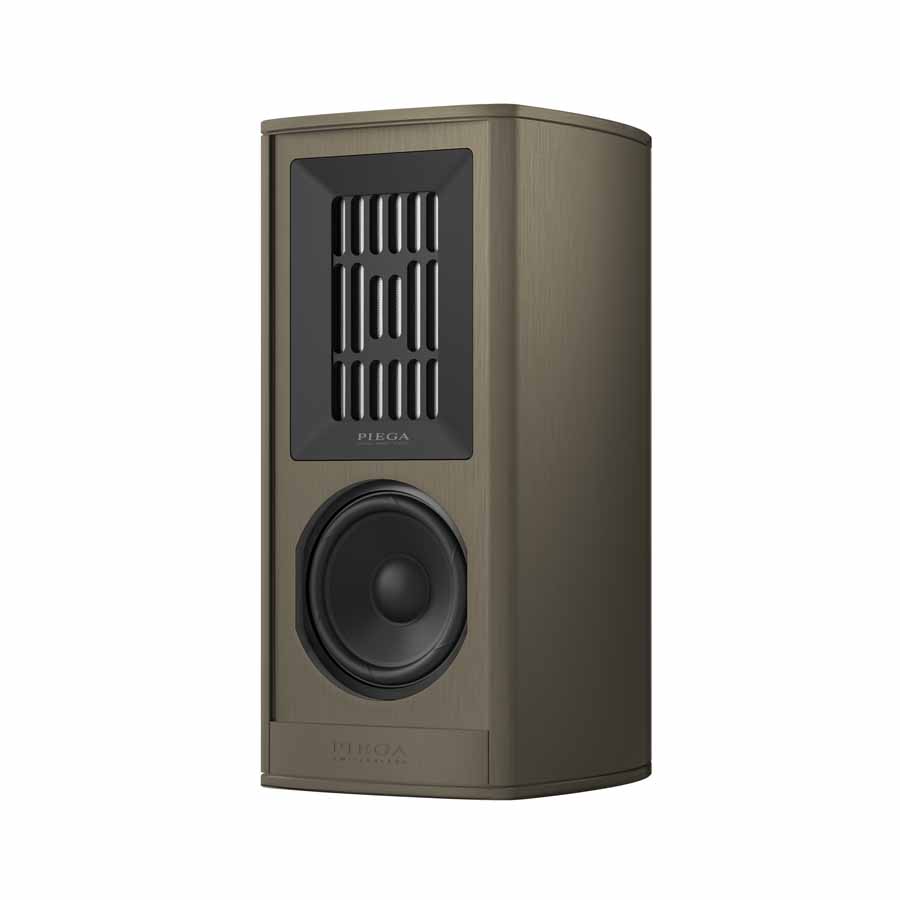
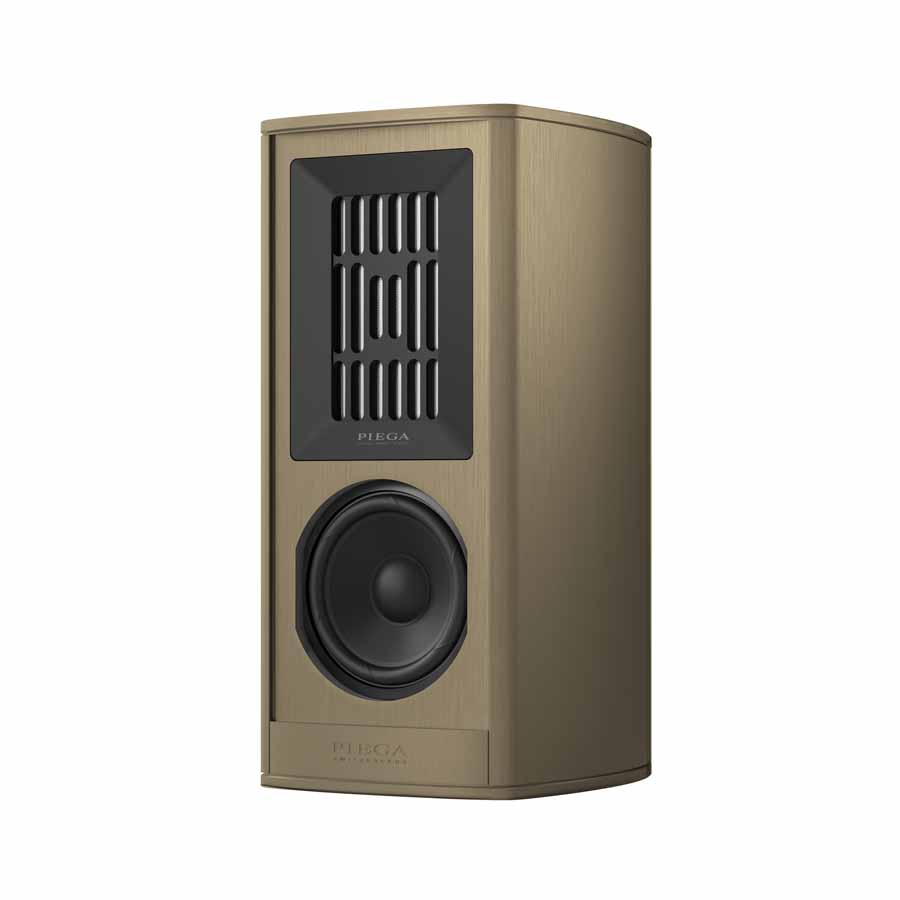

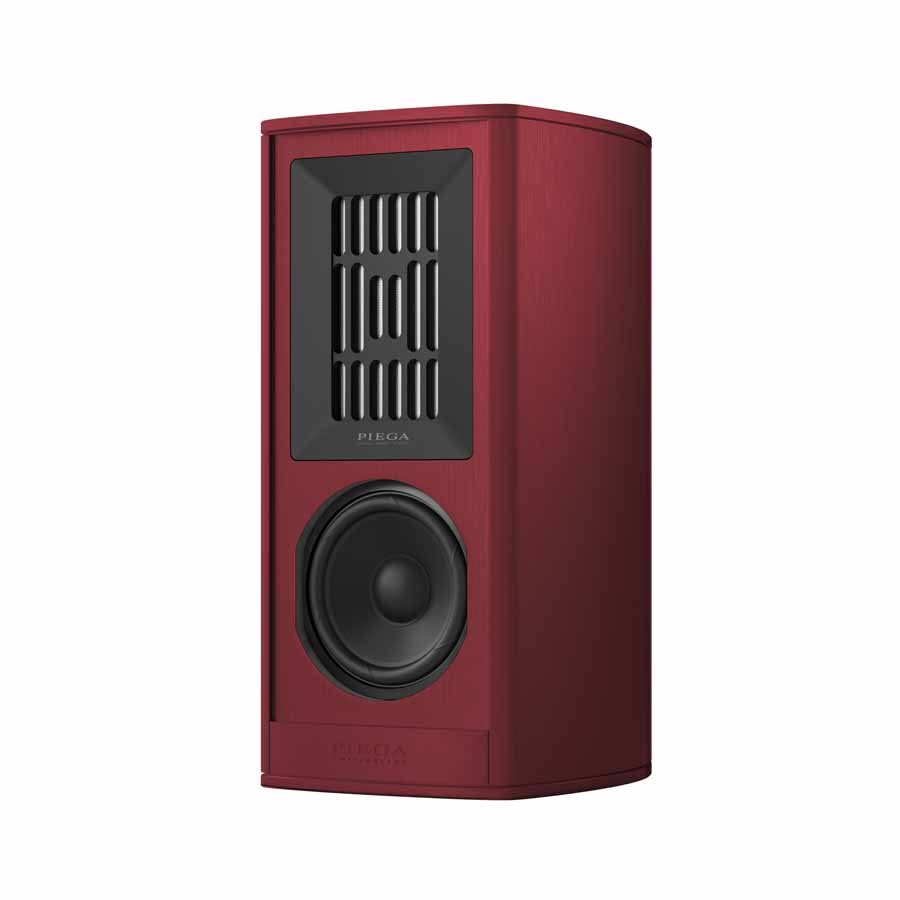
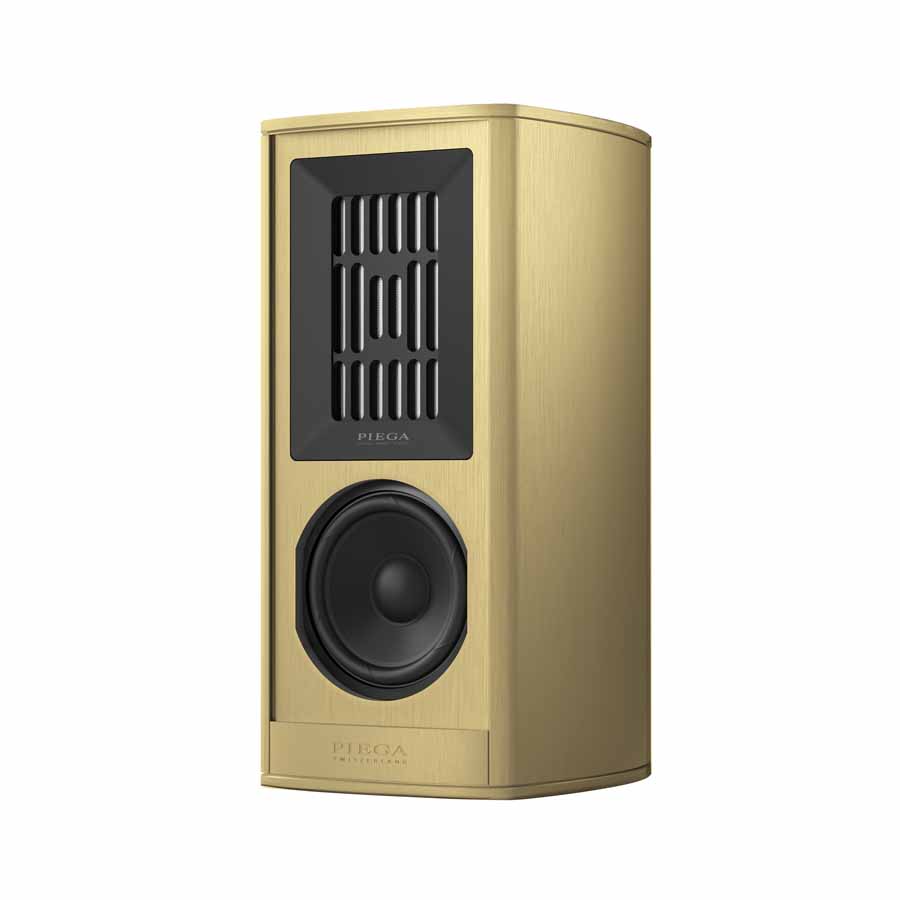
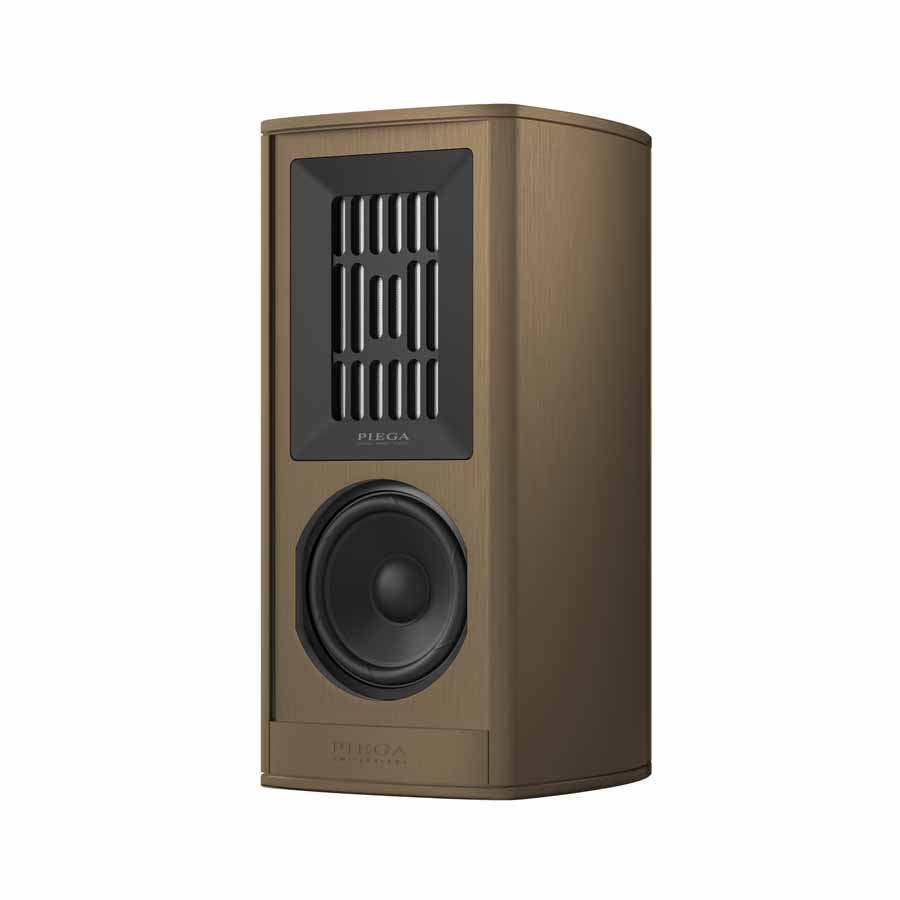
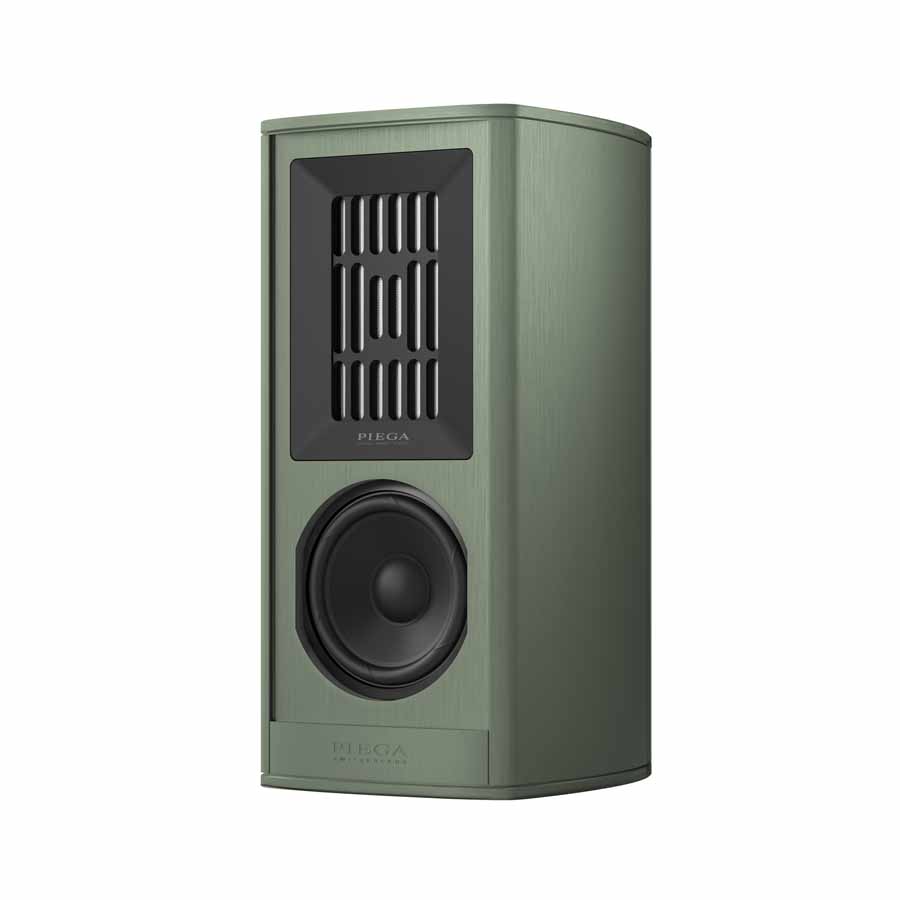

SET UP
Piega give some basic, straight forward instructions on how to set up the 411. Essentially, if you measure the distance between the speakers, Piega recommend being 1.5 times that distance away from the midpoint between them. That’s getting on for double the traditional distance recommendation based on setting up an equilateral triangle. They then recommend toeing the speakers in to point directly at the listening position. One other thing that’s notable is that they recommend keeping them much closer to the back wall than a lot of rear-ported speakers, suggesting around 0.5-0.8m from the rear wall.
I do suspect that the nominal impedance that Piega quote is a little flattering. Ribbons are a bit notorious for running to very low impedance figures, and in turn being a challenge for some amplifiers to drive. My Electrocompaniet was fine, but it’s a big, beefy thing. I’d want to do some extensive listening before putting it on the end of a 6 W valve amp, or something like a 50 W class D, to ensure they could drive the speakers properly in the intended listening environment.
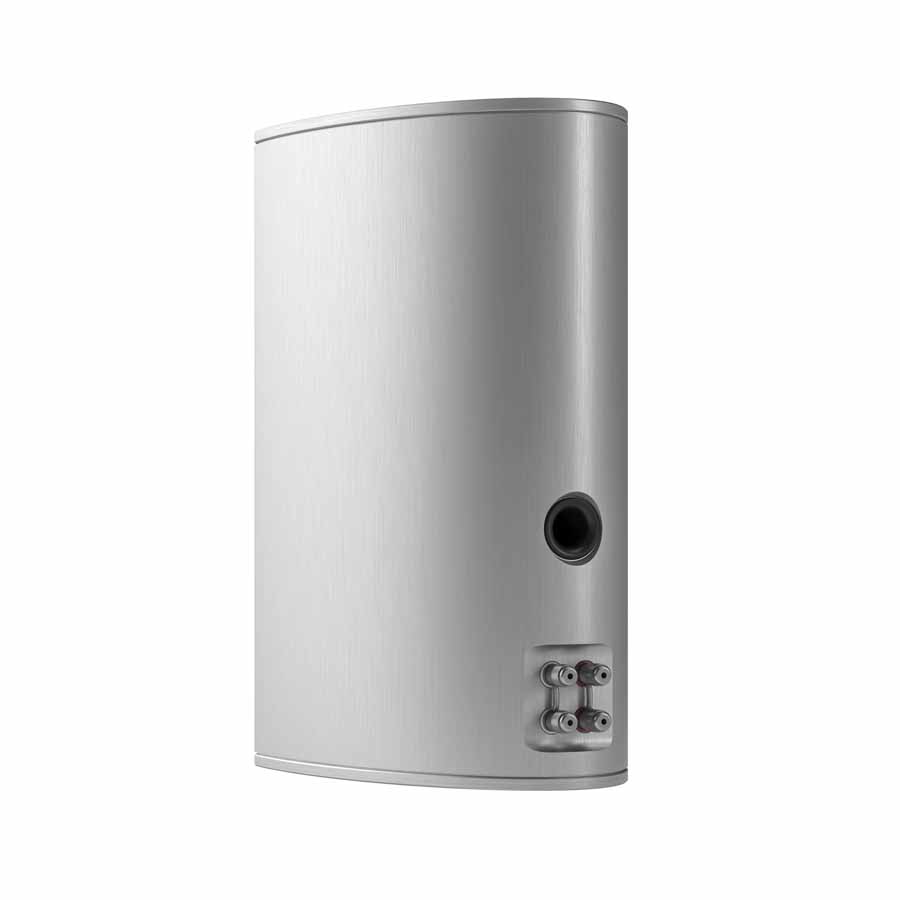

SOUND QUALITY
One of the early records I tried on the Piegas turned out to be an excellent demonstrator of some of their key sonic qualities. Crash is The Dave Matthews Band’s third studio release, released back in 1996. In the first 30 seconds, you get a real sense that there’s something special going on here. There’s just such a sense of precision to how the acoustic guitar is being presented, but it’s at about the minute mark when the drums have kicked in that I got the old goosebumps on the back of my neck. Obviously, to a certain degree, that’s simply the fact that Carter Beauford is an iconic drummer (A Rolling Stones poll once put him as the 10th best rock drummer in the world), but the reproduction contributed. There are some pretty rapid hi-hat strikes here, and I’ve never heard the individual hits sound so distinctive. Under normal circumstances, there’s often a slight blurring of one into the other, almost a HiFi equivalent to a glissando going on. With the 411s, the ribbons can move with such speed and agility that you get the full sound of each hi-hat strike with a distinct gap. You get a similar sensation at the beginning of the track “#41”; there’s so much going on in the rippling hi-hat sound again. It’s quite normal when I’m writing a review that I’ll listen to a short section of a track a fair few times while I’m honing the description, and I found myself repeating that super simple intro quite a few times just on its own merits because I was enjoying what the Piega’s brought out so much.
This distinction between sounds continues strongly in the not-quite title track “Crash into Me”. The snare sound is what particularly drew my ear here, again the speed of the Piega’s ribbons giving such detail to the sound of hundreds of tiny little points bouncing on the bottom skin of the drum, in a way I just haven’t ever heard elsewhere. Don’t think for a moment that all this talk about subtle details means these speakers are all analytical and soulless either, there’s oodles of punch and slam when the tracks require it.
My introduction to the sizeable discography of Peter Gabriel wasn’t a traditional one. It wasn’t any of his Genesis era back catalogue. It wasn’t one of his big solo hits like Sledgehammer or Solsbury Hill. It was the unassumingly titled Up. It was released a full decade after the release of the previous album, the unassumingly titled Us. There’s quite an appreciable difference between the two albums, considering it’s the same lead artist and the same core cadre of musicians (Tony Levin, David Rhodes, Manu Katche). But then a decade is an enormously long time in music. The result is an album that feels a lot more brooding, and the whole thing carries a sense of weight (acoustically, as well as emotionally). Obviously, this being Peter Gabriel, the recording quality is top-notch and there’s a real sense of songs that have been crafted by an absolute master, and the Piegas really let that shine through. One of the standout tracks for me is Sky Blue, featuring The Blind Boys of Alabama providing backing vocals in the latter half. Gabriel himself has said that the song took absolutely years to get to the point he was happy with it, and hearing the Blind Boys singing the end section was when he knew it was done. You can really hear why here; on paper, they provide a very understated performance. The profound sense of detail that the Piegas bring to the vocals here is just extraordinary – each voice is clear and carries a massive amount of character to it.

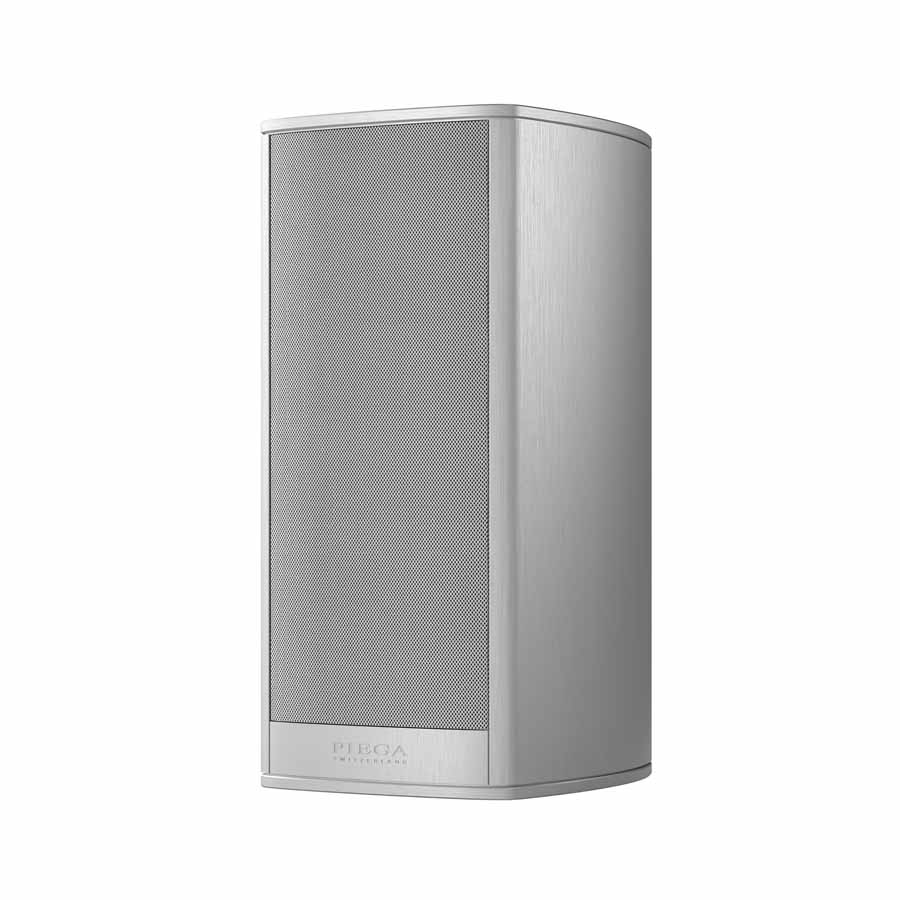
I Grieve is another track of very distinct sections; it starts with an almost meandering soundscape, with Gabriel’s vocals laid quite delicately on top. It’s not dominant in the mix at all, but Tony Levin’s gentle bass playing really underpins the section, and it really highlights what is to me the most unexpected delight of the 411s; the phenomenal bass performance they’ve rung out of a driver that strictly speaking doesn’t even hit 6inches in diameter. For a standmount loudspeaker, it’s quite extraordinary. A big part of this is the fact that while there’s every appearance of 2 physical drivers, much like almost every stand mount going, because the ribbon section is both a mid and treble, the regular driver only needs to cover up to 450Hz, rather than the 1.7-1.8kHz convention of a 2-way. That makes its job a lot easier, but also means it can be considerably optimised for bass reproduction. As well as being flat to 35Hz (±3dB), it also means that you don’t have to crank the volume to get the low notes to kick properly. This becomes even more evident as the track progresses – there’s a real tempo change at around the 5-minute mark, and the low notes really take centre stage here. Even at very normal, all-day-listening kind of volumes, it’s full-throated and weighty.
Another observation here is that at no point does this prodigious bass sound unnatural. I’ve heard a speaker or two over the years that added a noticeable artificial bass hump, which meant odd things like light jazz got these weird additions that really didn’t sound like they were present on the recording. No such issues here – nothing I’ve played that’s naturally lacking in any low notes gets any sort of artificial augmentation. Similarly, I feel the need to just clarify when I use the word “detail” when talking about the top end, I really do just mean detail. The word detail is so often used euphemistically to talk about a speaker that’s overly bright without being rude; that is utterly not the case here. Overly bright treble is like nails on a chalkboard for me, and there’s not a hint of it here, apart from on the odd recording which is naturally bright, and then the Piegas give you exactly what’s there.
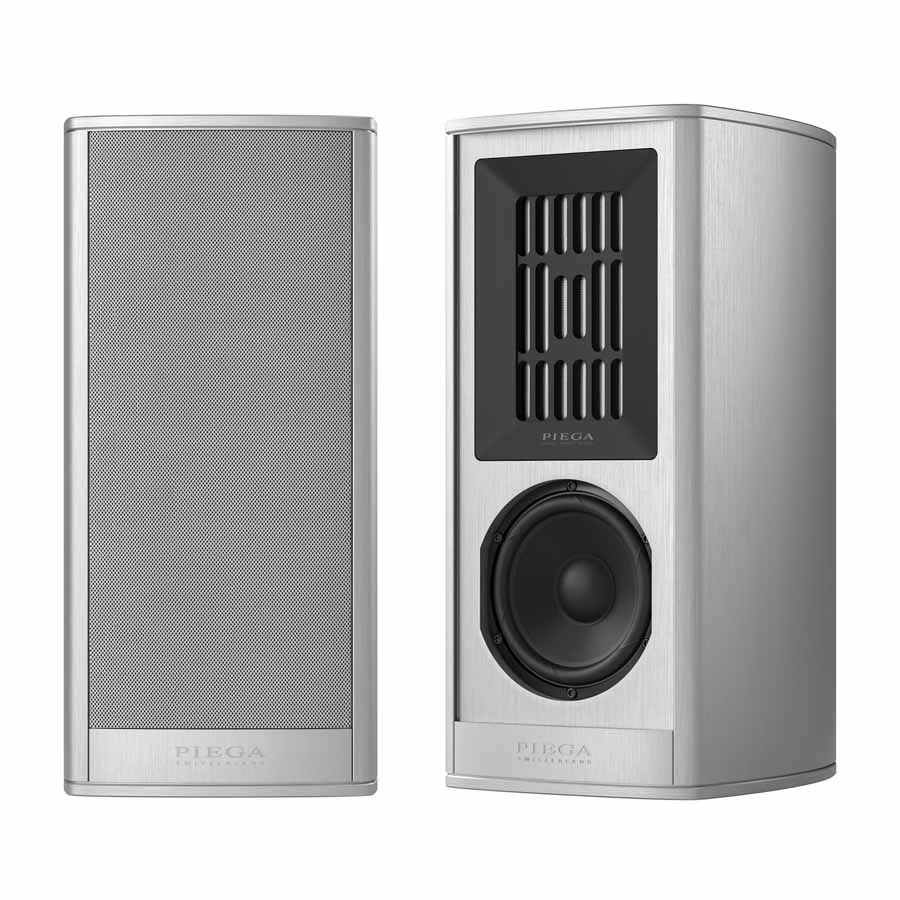
My usual listening environment is a regular British front room, and the 411s absolutely fill it with such ease it piqued my curiosity. One weekend, I bundled my entire set-up into the car and took it up to my parents’ place, because their living room is about 2.5 times the size of mine, to see how they fared. Logistics meant that, as well as being in a much bigger room, they were also about 3m off the back wall, so there was diddly squat by way of reinforcement. They still did a phenomenal job and still filled the space comfortably. I’m not saying you wouldn’t want to at least consider the bigger 611 if you had a room that size, but they are also pushing twice the price, so it may well not be an option on purely budgetary grounds.
The other aspect that warrants comment is (aside from perhaps a set of Quad electrostatics) I’ve not heard another speaker that just disappears and presents a completely cohesive wall of sound like the 411s do. The imaging is spot on, almost to the point where the way the speakers disappear almost feels disconcerting. It’s extremely impressive.
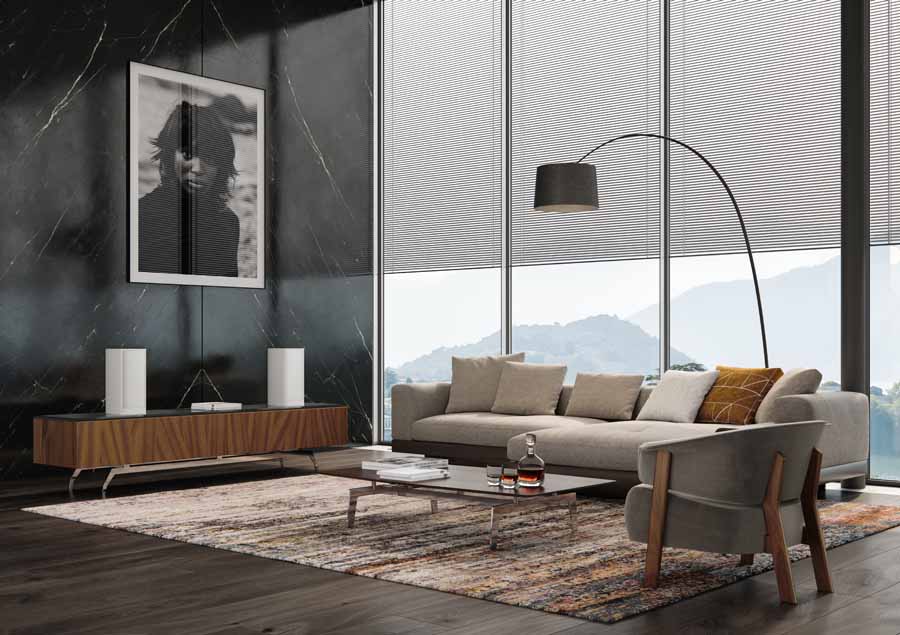
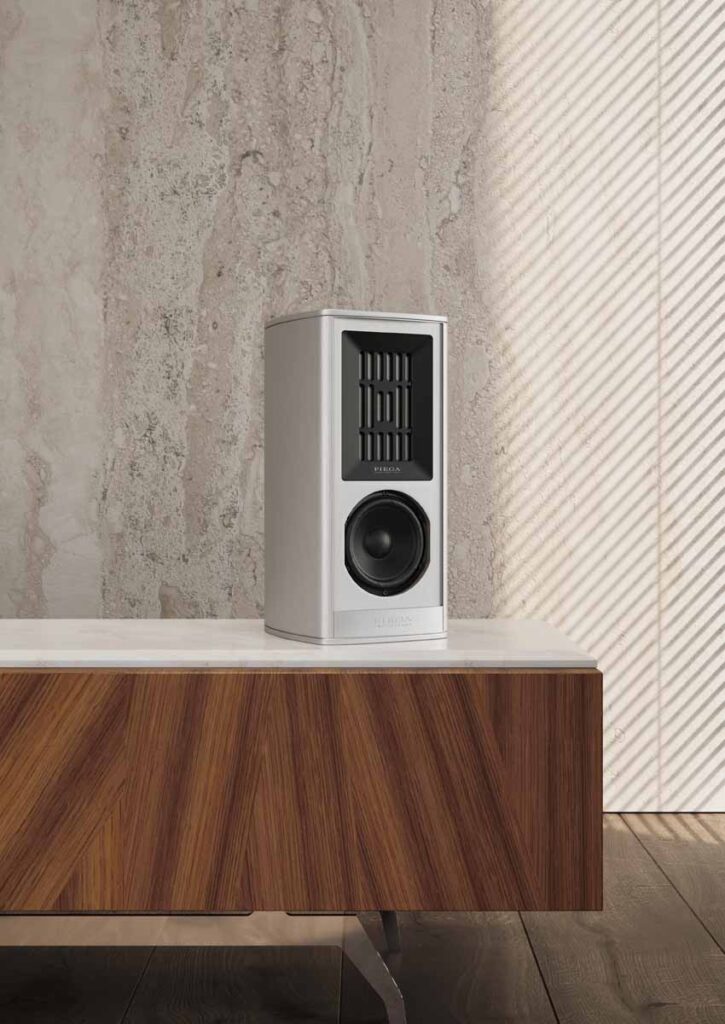
QUIBBLES
The only issue I had was the initial job of getting the grills off the speaker. To minimise any vibration, the grills are fixed in place extremely firmly, and even with the help of the magnet that’s included for the express purpose of getting the grills off, it was a right pain. In the end I had to rummage around for a thin spatula that I could get in the tiny gap between the grill and the speaker to lever it off. I suspect for most folks, removing the grills is probably a once in a lifetime operation, so it’s unlikely to be a massive pain point. It’s also an issue that arises from trying to ensure excellent sound quality, rather than due to any sort of thoughtlessness or negligence on the part of the design team, which does shift my attitude to the issue into far more positive territory.
I’ve been a little bit sceptical in times past of the dedicated stands available for higher-end stand mounts. None of them has been bad or anything, but they often seem to cost a substantial chunk of change for what they are. Piega did make a stand for the original version of the 411, but they’ve dropped it (and the corresponding mounting holes) on the Gen2 version. While my Custom Design stands have done an admirable job from an acoustics perspective, the distinctive styling on the Piega does clash somewhat with the aesthetics of the stands. For once, I find myself wishing they did have some as an option to go with.
CONCLUSION
When someone takes an unworn path with a product, it’s so often something where you discover precisely why most people wisely run away from those design choices. But very occasionally, a company spots a genuinely different strategy that they can make work. That’s what Piega has done here, and the result is a phenomenal speaker. It’s incredibly detailed, without being bright or shrill. The sense of speed and timing across both the treble and the midrange is just extraordinary, as is the quite bewildering bass capability. They also do such a good job with projecting that stereo image and just disappearing when you set them up properly.
Unless you’re an avowed horn enthusiast, these really need to be on your audition list if they’re within a budget your can afford. Make sure they’re partnered with a suitably meaty amp, and you’ll genuinely have a pair of speakers that have you set for life.
I cannot possibly consider not giving these Piega’s a Reviewer’s Choice Award here. They’ve blown my mental picture out of the water, not just of what an £8k stand mount can do, but frankly, what any £8k loudspeaker can do. The C112+ driver is just an extraordinary communicator of detail, and the SEAS driver produces a level of bass that I’m sure the laws of physics would like a word with. I’ve had these speakers in residence now for a ridiculously long time for a review pair (mostly because I don’t want to give them back), and they still surprise me on a regular basis with what they can do. I cannot quite go to that reviewer cliché of “they’re not leaving the house”, because these ones will be, but short of something truly miraculous, my very own pair will make their way here at some point in the new year.
AT A GLANCE
Build Quality and Features:
It’s probably a cliche to say that a speaker with the approximate density of a neutron star is built like a tank, but these are, unsurprisingly, a phenomenally solid and robust feeling speakers
Bi-amping is an option if you desire
Sound Quality:
Just out of this world, I cannot begin to overstate how much these speakers have forced me to completely reconsider what’s possible in a standmount sized loudspeaker
Value For Money:
The value proposition to me is extremely good, within the caveat that this is, of course, an £8,000 speaker, so it’s not what you’d call bargain basement
We Loved:
Everything.
The detail and speed of the treble and the mids
The heft and presence of the bass. The clean, stylish looks
We Didn’t Love So Much:
The grills are a pain to get on and off, and for once, I’d absolutely love a matching speaker stand
Elevator Pitch Review:
“Come for the detail, stay for the bass” is my tagline for these speakers. These are a stylish, compact loudspeaker that produce a sound way beyond what their size would suggest. Piega have produced something that’s genuinely magical here.
Price:
Jon Lumb
SUPPLIED SPECIFICATION
Speaker Ways: 3 Way
Frequency Response: 35 – 50000 Hz
Speaker Sensitivity (@ 2.83V / 1m): 90 dB
Recommended Amplifier Power: 20 – 200 W
Speaker Impedance: 4 Ω
High-Frequency Driver: 1 x C112+ Coaxial Ribbon
Low-Range Driver: 1 x 160mm UHQD Woofer
Enclosure Type: Bass Reflex
Speaker Inputs: Bi-Wirable Binding Posts
Enclosure Material: Extruded Aluminium (TIM2)
Dimensions (W x H x D): 210 x 450 x 310 mm
Weight: 25 kg


























































